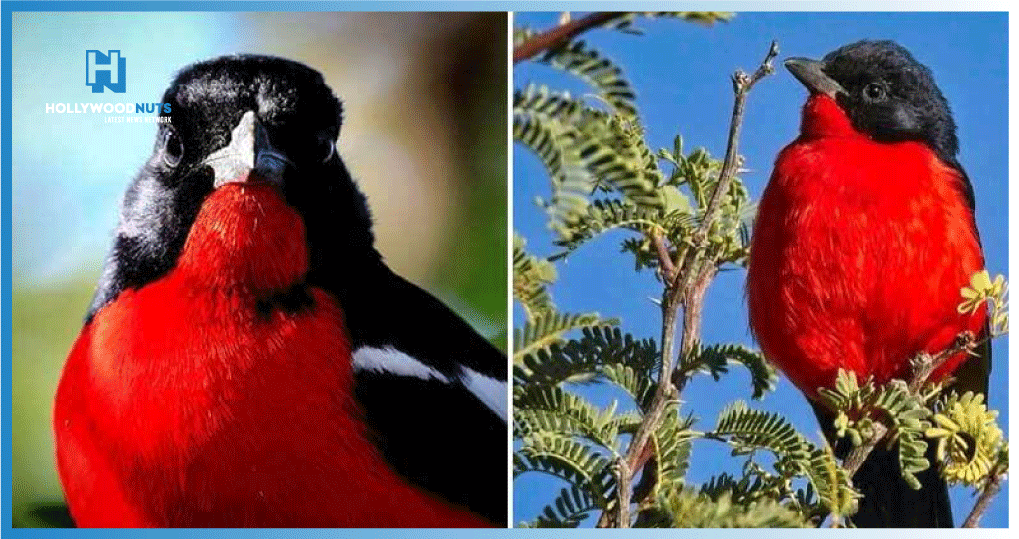Meet the stunning bird with gorgeous red and black plumage, the Crimson-Breasted Shrike.
A spectacular bird is the Crimson-breasted Shrike. These birds stick out from the crowd thanks to their stunning red and black colouring. These gonoleks may be the highest point of a bird’s red and black feathers.

As you can see, the head, back, tail, and wings of this kind of bird are all black (with white stripes on each). Its underparts, meanwhile, are a bright scarlet. This striking contrast draws attention to these birds wherever they appear.

The buff-brown bars on young Crimson-breasted Shrikes are barred. They have a paler bill than adult birds do.

Some Crimson-breasted Shrikes have yellow underparts as well. These stunning birds are thought to be a different species.

Angola, Zambia, northern South Africa, Nambia, Botswana, and western Zimbabwe all have populations of crimson-breasted shrikes, which are native to Southern Africa.

They prefer thornveld, Acacia savanna, semi-arid scrubland, and riparian scrub as their primary habitats in dry regions.

This particular kind of bird eats fruit, ants, beetles, and caterpillars. On fallen leaves, tree trunks, and anything else they can find on the ground, they look for food.

Both male and female crimson birds construct their nests on tree forks or occasionally on horizontal branches during the breeding season, which is most active from October to November. These nests are constructed from the bark of Acacia trees, grass, and rootlets that are bound together by spider web.

Female birds deposit two to three eggs, which they subsequently incubate for 15 to 17 days. Male Crimson-breasted Shrikes participate in the incubation process, unlike many other bird species. Additionally, they assist females in feeding the chicks until they are completely grown.

The number of Crimson-breasted Shrikes is presently quite constant. Their natural environment has been expanded and conserved.
You can watch the video of this stunning bird below.

